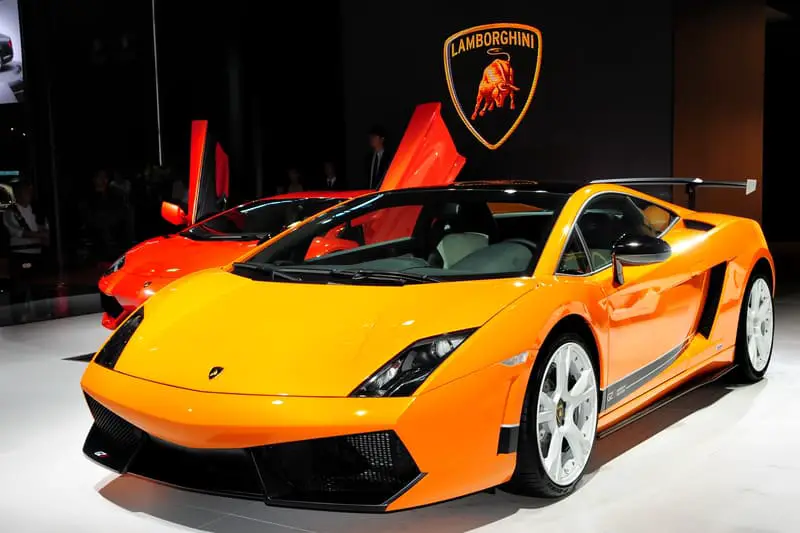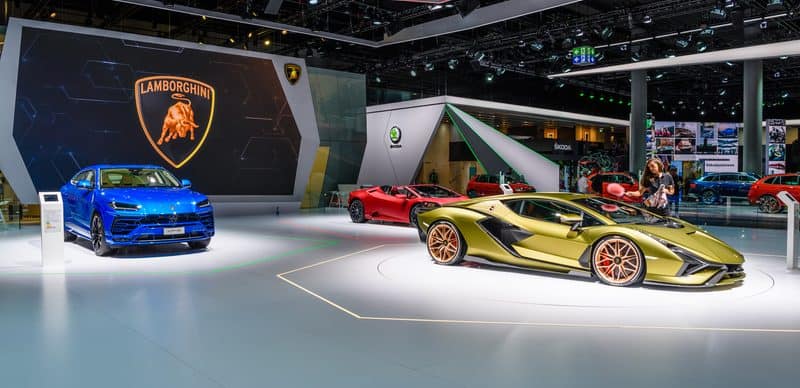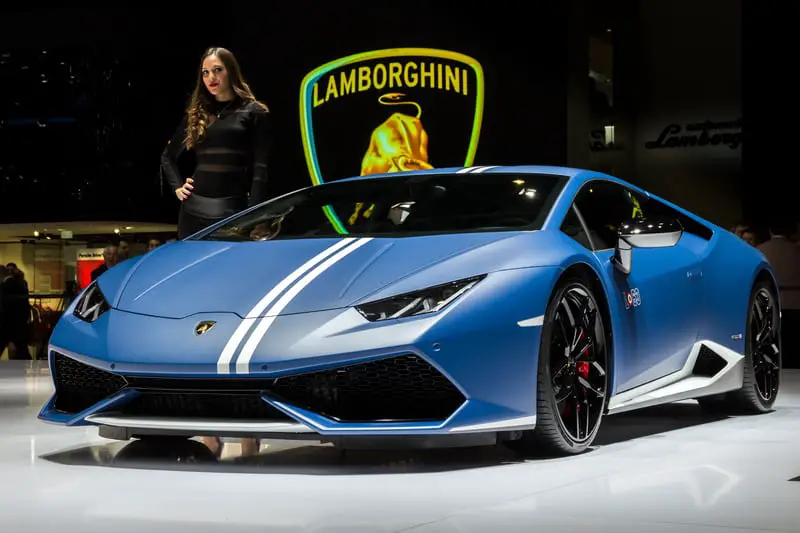
As one of the great supercar icons, Lamborghini has been around since 1936, and they represent the pinnacle of luxury, speed, and status. With their distinctive good looks and branding, Lambos represents the dream of car lovers worldwide – but are Lamborghini’s reliable?
As a whole, Lamborghinis are not that reliable. Although the more recent models like the Huracan and Gallardo have reputations for reliability, older models and cars generally are not that reliable, mostly because they are handmade. Lamborghinis are not reliable for everyday use.
Let’s take a test drive through Lamborghini’s various ages and establish the common reliability issues and what has made some of their more recent models more reliable.
3 Reasons Why Lamborghinis Aren’t Reliable
Aside from the reasons listed above, there are three reasons why Lamborghinis aren’t reliable.
- They have a shorter lifespan than most cars
- Their handmade production creates room for error
- They’re not designed for daily usage
Let’s look at each of these elements individually, and then we can look at how Lamborghini has improved their reliability over the years.
1. Lamborghinis Have A Shorter Lifespan Than Other Cars
In the USA, a typical lifespan for a car is 200 000 miles, but Lambo’s typically only get to around 150 000 miles, which is 25% less than normal. If you are relying on a car to get you 200 000 miles or better before replacement, the Lamborghini may not be your first choice.
Most cars have available spares, but when it comes to handmade supercars, especially older models, spare parts are not always available, contributing to their lower lifespan in the market.
This is one of the reasons why Lamborghini’s aren’t reliable, and the main contributor to this is ironic because of their production method.
2. Lamborghinis Aren’t Reliable Because They Are Handmade
Even though its reliability falls short compared to more affordable city cars, each Lamborghini incurs a manufacturing cost of at least $100,000 due to its handmade construction.
Handmade cars tend to have a higher risk of breakdown and failures than production cars, which is simply due to the precision involved in production.
Creating parts by hand rather than by machine will leave fine margin errors, and over time and usage, these become magnified and result in failures and breakdowns.
Another spinoff of handmade parts is that they are not easily available and require a made-to-order process, time, and expense to locate or, if found, could cost a mint to acquire and have them fitted.
When you have performance cars like Lamborghinis, you can’t take them to your mechanic or any service center down the road. You have to take them to be serviced by qualified personnel, which costs more money.
You could argue that if you buy a Lambo, you can afford the associated expenses. There is some validity to that, but after a while, laying out for a never-ending stream of breakdowns or repairs will become frustrating.
3. Lamborghinis Aren’t Reliable For Daily Usage
The Lambo is about speed, flash, status, power, and stunning good looks; these cars deliver this in bucketfuls! But they are also loud, uncomfortable, and mostly impractical like everyday cars. This is because they are not designed for this type of usage.
They have limited space even for the smallest bags, and even the SUVs don’t have the same room as regular SUVs.
Another consideration is that these cars are low, really low, and you will end up crawling over speed bumps unless you want spoiler scratches on your eye candy!
What Are The Most Common Problems With Lamborghinis?

One of the most obvious problems with these cars is that the exterior can easily get damaged.
Whether it’s from speed bumps, bird poop, or scratches from the wrong cleaning materials, the exterior paint of the Lambo is vulnerable to damage, and repairing this will cost a pretty penny!
With the power that these engines create, you need an equally powerful set of brakes to deal with it, and faulty or ‘mushy’ brakes are often cited as problems.
The intense heat generated in the wheels and brake calipers can cause the brake fluid to heat up dramatically and result in ‘soft’ braking or ‘mushy brakes.
At high speed, this can be dangerous as you will not be able to stop in time when you need to.
Another problem with models like the Diablo is the engine computers which can cost $5000 each to replace if they fail.
Drivetrain component issues are also common, and this again comes down to the handmade component’s inability to withstand the torque generated by powerful engines.
It would seem from the discussion above that Lamborghinis break down more often than not, and owners spend excessive time on repairs and parts, but this is not the case. You wouldn’t have a car brand with such extensive history if they were truly poor.
How Does Lamborghini’s Reliability Rate Against Other Supercars
In late 2021, Newsweek published a list of the top 15 least reliable supercars as rated by Uswitch, and this list featured three Lamborghinis.
The criteria used were based on the number of recalls, general media reviews, and how many passed the US Equivalent of the MOT test.
Here’s the full list:
- Mercedes-Benz AMG, GT — 3.22
- Porsche 911 — 4.40
- Maserati GranTurismo — 5.00
- Ferrari 488 Spider — 5.93
- Aston Martin DBS — 5.96
- Ferrari 360 — 6.29
- Ferrari F355 — 6.67
- Ford GT — 6.99
- Lamborghini Aventador — 7.38
- Audi R8 — 7.46
- Ferrari 458 Italia — 7.52
- Ferrari 550 — 7.73
- McLaren 720S — 7.82
- Lamborghini Gallardo — 7.87
- Lamborghini Merciélago — 7.88
The three models listed here are the Aventador, Murcielago, and Gallardo but none were in the top 5 most unreliable.
The Aventador was ranked 9th, the Gallardo 14th, and the Murcielago came in last – this means that of the supercars listed, Lamborghini was not the most unreliable supercar, but had enough recalls and other poor reviews to make a list with three models.
Ferrari had five models on the list, however, they are overall on par with Lamborghini when it comes to reliability.
Like Audi (The R8) and McLaren, Porsche only had one car listed. Still, this perspective is a little skewed as Audi isn’t primarily a supercar manufacturer, and Mclaren doesn’t have as many models as either Lamborghini or Porsche.
What Is The Most Reliable Lamborghini?

Uswitch compiled a list in 2022 that measured the reliability of 25 supercars. Measured by the same criteria as the list above (recalls, MOT and reviews), the Lamborghini Huracan was ranked as one of the most reliable supercars available and scored an impressive 9.37 out of 10 on Uswitch’s rating.
This was because the Huracan had no recalls during its production runs over the years and had a very high pass rate for the UK equivalent MOT scores, as well as strong overall reviews of the car from various media channels.
This score placed the Huracan first atop the list of 25 supercars in terms of reliability, and even the iconic R8 from sister company Audi only ranked 10th.
Are Lamborghinis Unreliable?
The picture presented here will apply to most supercars. Even though Lamborghinis had three models on the most unreliable list, the Huracan topped the 25 most reliable supercar list, evens out the scoring.
Lamborghinis are less reliable than everyday Toyotas, VWs, and KIAs, but this is not a fair and even comparison, as would comparing either of those brands to the power, grace, and beauty of the Lamborghini.
Still, compared to supercars of similar pedigree, they are probably more reliable than most. Even though they are mechanically sensitive, they are as reliable as most supercars, especially modern ones.
Like any other classic, Older Lambos will experience parts and performance issues. If you seek to acquire one of these iconic supercars, it would be wise to have it checked thoroughly before putting money down.
There are aspects to consider when buying a Lambo, like visibility, insurance, repairs, and everyday damage like scratches and speed bumps.
Still, there is also the incredible experience of being behind the luxury steering wheel of one of the world’s greatest mechanical engineering feats. You can rely on the fact that that experience will be breathtaking!
What Makes A Car Reliable?
Before we jump into why Lamborghinis aren’t reliable, we must understand what makes a car reliable. Aside from the obvious factors of the car or the engine not breaking down or recurring mechanical or electrical faults, aspects like visibility, safety, and expense need to be considered.
It’s important to see properly out of any car you drive. Many Lambo owners have complained about the car’s poor visibility, especially from the rear window. This brings the safety reliability issue into play.
Having limited or poor view restricts the driver’s ability to judge other cars on the road, and when you have a vehicle capable of high speed, not having good visibility as the driver is inherently dangerous.
Keeping your Lamborghini in good mechanical condition requires money, and services for these cars will easily run at $1000 or more. If there are major repairs needed, this can become a considerable expense.
This speaks to the car’s financial reliability and is why many owners only drive their vehicles on weekends or occasionally, as the insurance costs will be far greater on a supercar than on your average car.
Supercars Aren’t Reliable
If you’re looking for reliability, buying a Lamborghini or any other supercar brand is a very bad idea. The newer models are more reliable than the older models, but still, they are far behind regular cars from brands like Volkswagen, Honda, Kia, etc.
Your only true reliability with your Lamborghini is that your services and maintenance will be expensive, as will your insurance – but you’ll look great when driving it, even if you can’t see!
Another consideration is sitting. Since most supercars that cost $500 000 or more are not going to be driven daily or left out in the streets overnight, they are left to sit in garages until their owner wants to move them.
It is well known that leaving cars unused for periods is unhealthy and can result in electrical and mechanical issues. With Lamborghinis, the problem is also applicable, and while it may seem that not driving a supercar may prolong its life, the converse is true, and parts and cables can deteriorate over time.
